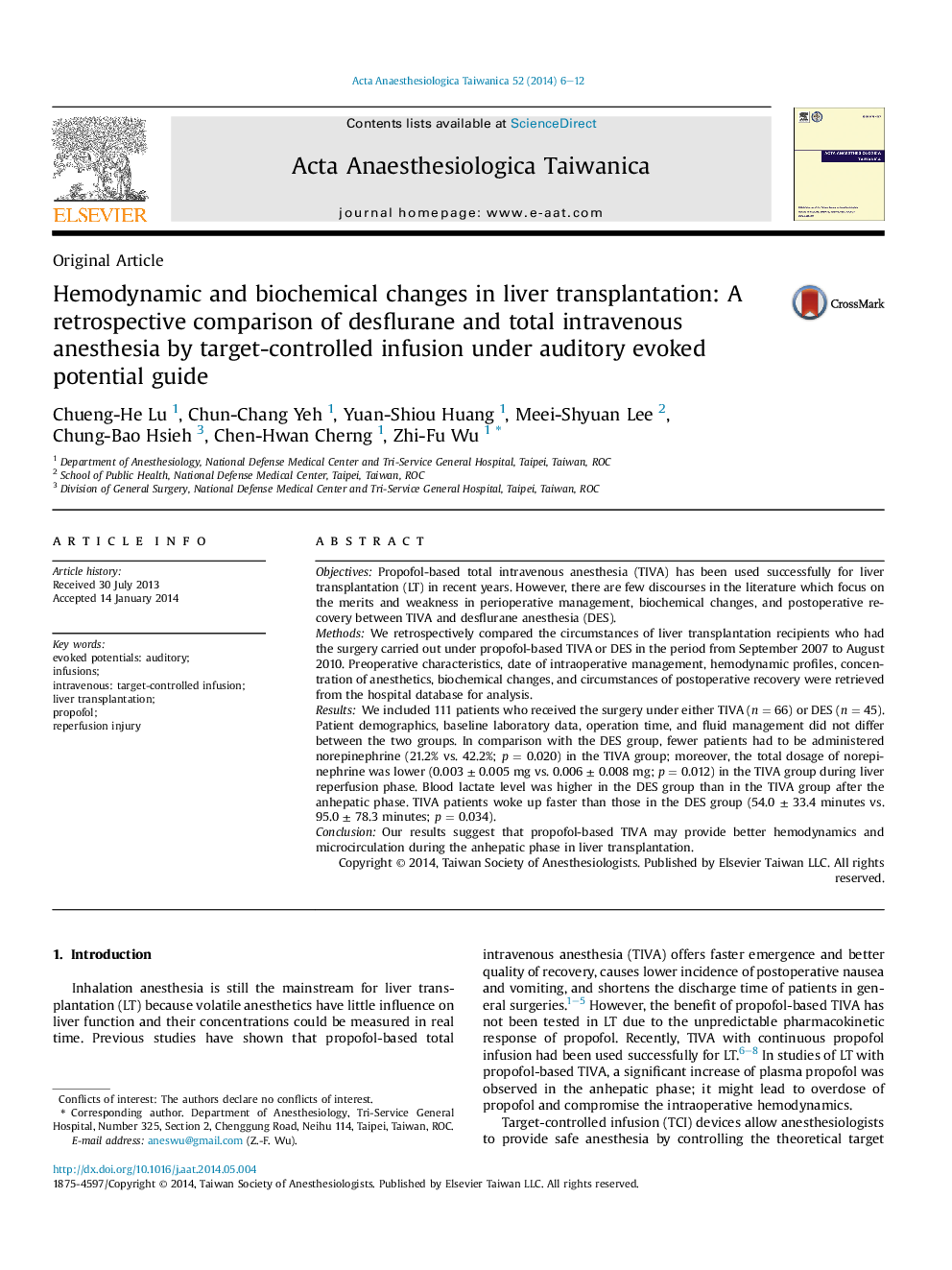| Article ID | Journal | Published Year | Pages | File Type |
|---|---|---|---|---|
| 2741441 | Acta Anaesthesiologica Taiwanica | 2014 | 7 Pages |
ObjectivesPropofol-based total intravenous anesthesia (TIVA) has been used successfully for liver transplantation (LT) in recent years. However, there are few discourses in the literature which focus on the merits and weakness in perioperative management, biochemical changes, and postoperative recovery between TIVA and desflurane anesthesia (DES).MethodsWe retrospectively compared the circumstances of liver transplantation recipients who had the surgery carried out under propofol-based TIVA or DES in the period from September 2007 to August 2010. Preoperative characteristics, date of intraoperative management, hemodynamic profiles, concentration of anesthetics, biochemical changes, and circumstances of postoperative recovery were retrieved from the hospital database for analysis.ResultsWe included 111 patients who received the surgery under either TIVA (n = 66) or DES (n = 45). Patient demographics, baseline laboratory data, operation time, and fluid management did not differ between the two groups. In comparison with the DES group, fewer patients had to be administered norepinephrine (21.2% vs. 42.2%; p = 0.020) in the TIVA group; moreover, the total dosage of norepinephrine was lower (0.003 ± 0.005 mg vs. 0.006 ± 0.008 mg; p = 0.012) in the TIVA group during liver reperfusion phase. Blood lactate level was higher in the DES group than in the TIVA group after the anhepatic phase. TIVA patients woke up faster than those in the DES group (54.0 ± 33.4 minutes vs. 95.0 ± 78.3 minutes; p = 0.034).ConclusionOur results suggest that propofol-based TIVA may provide better hemodynamics and microcirculation during the anhepatic phase in liver transplantation.
